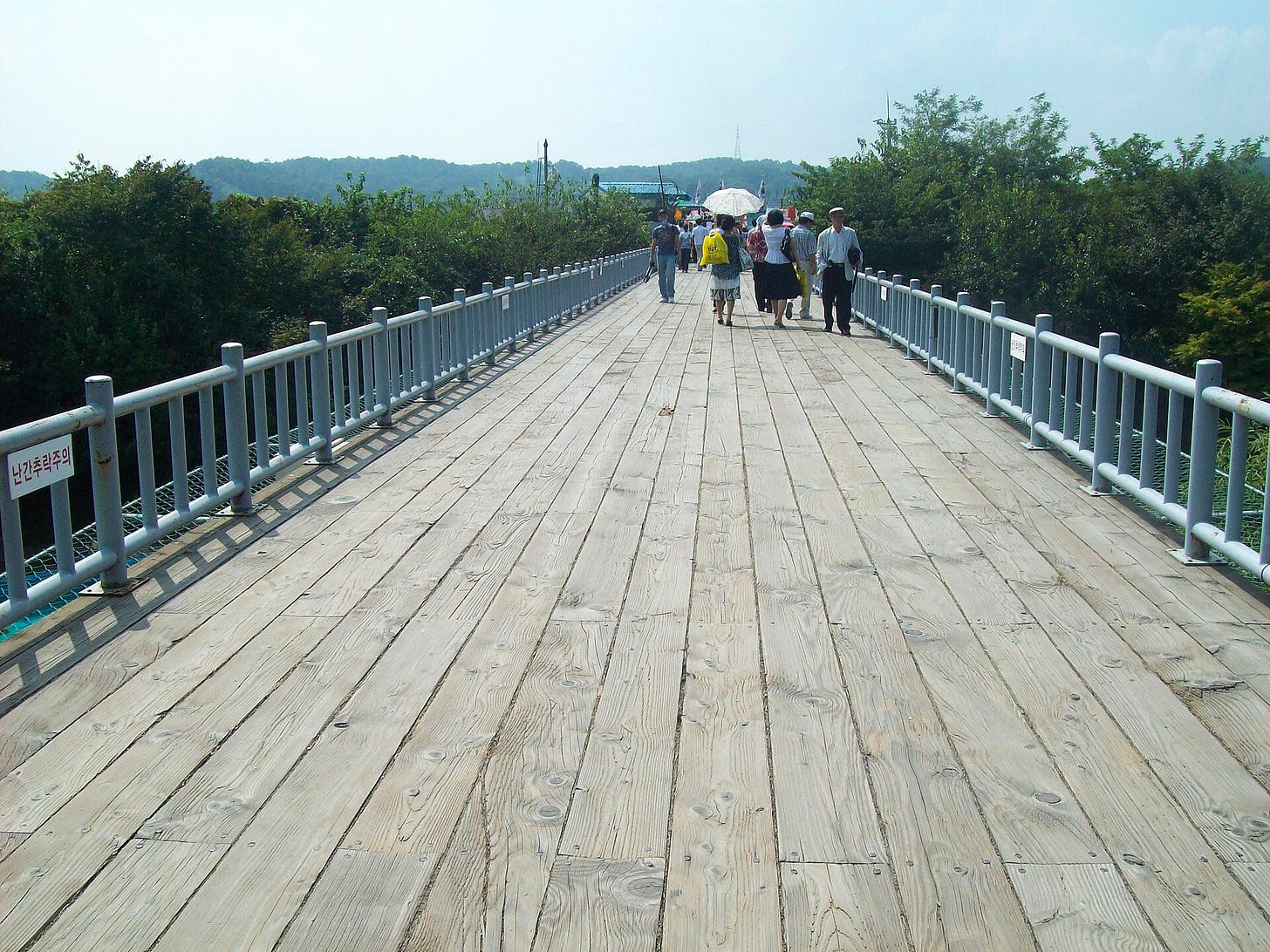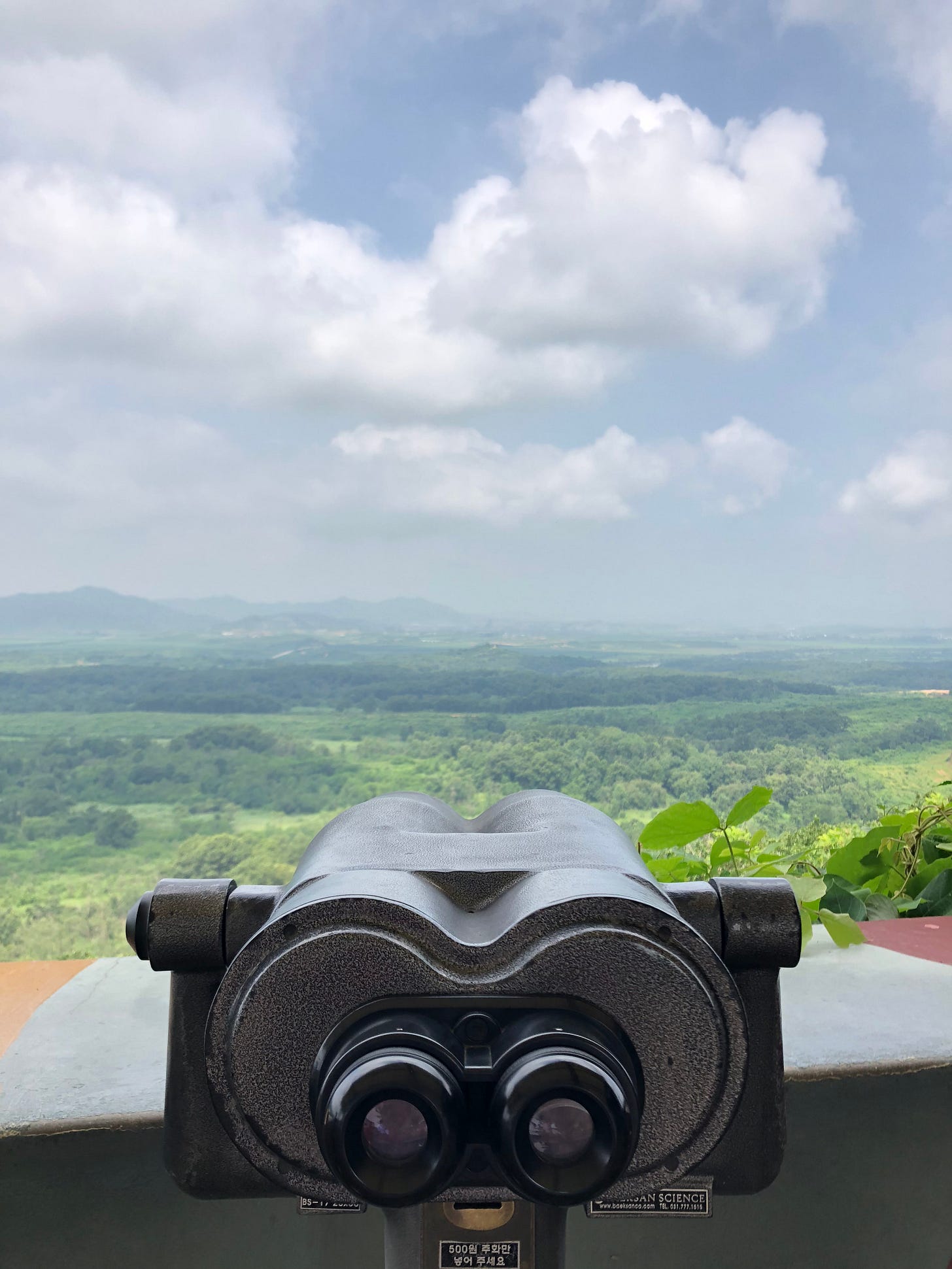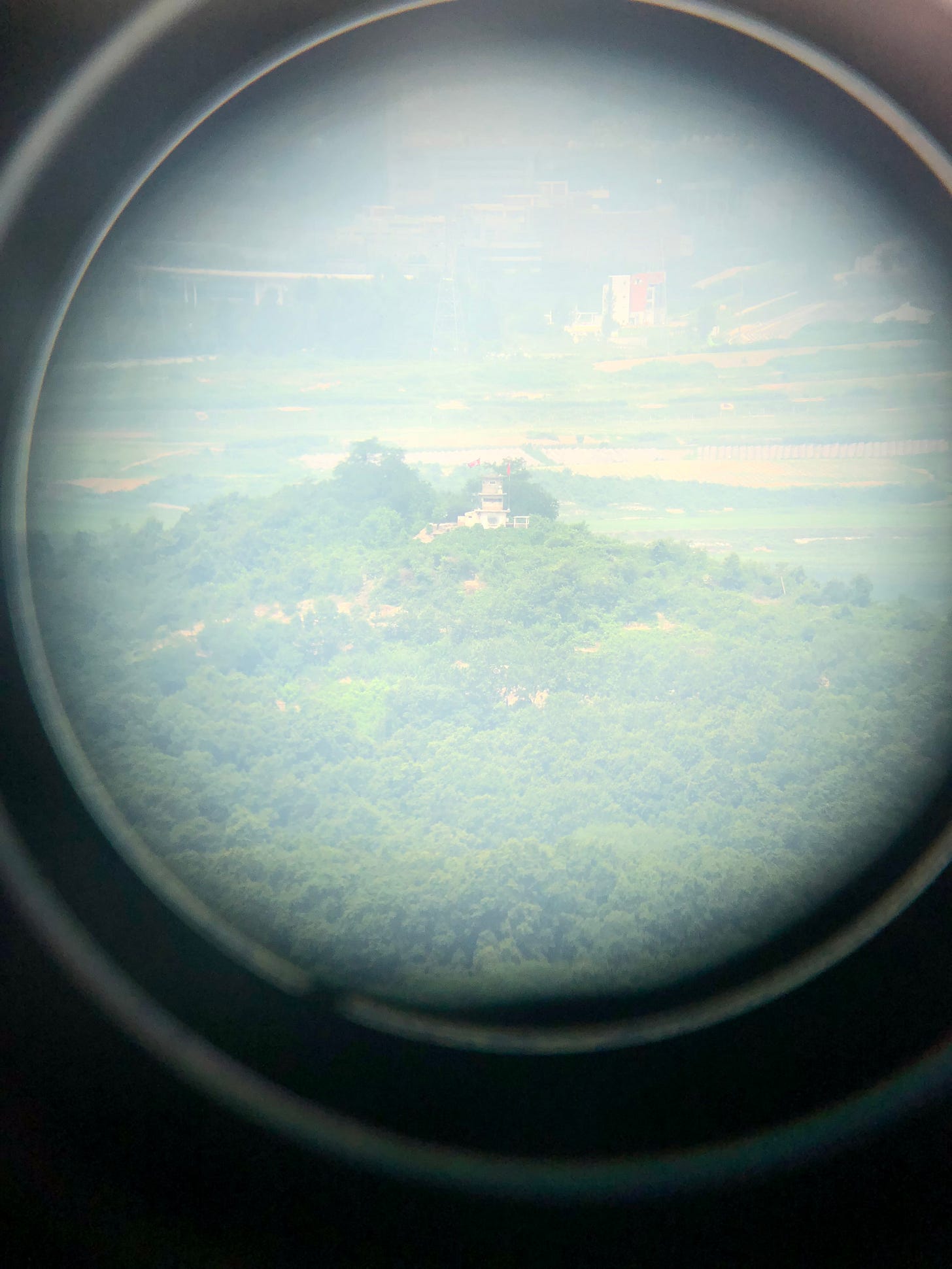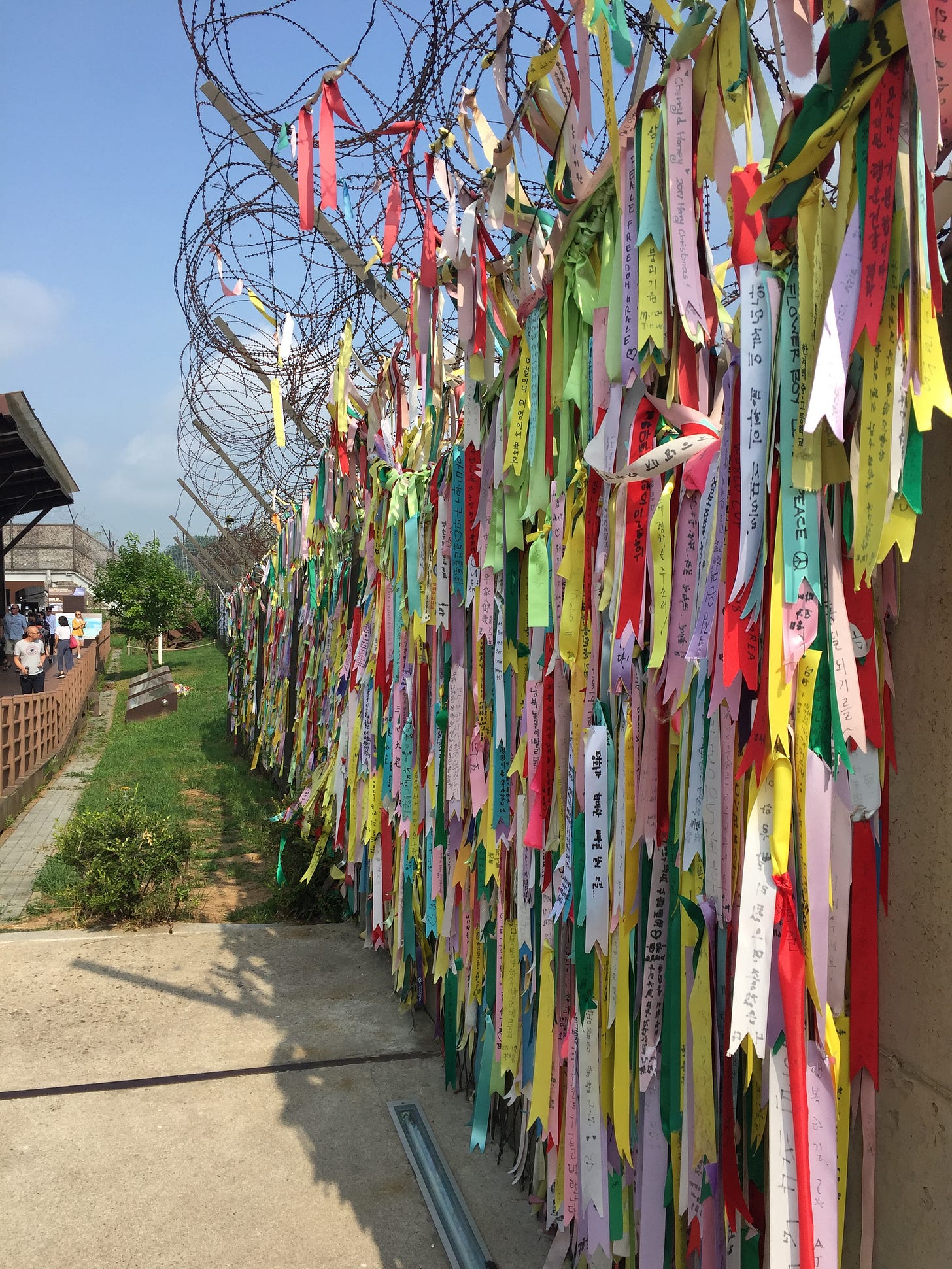Visiting The World's Most Heavily Militarized Border
Exploring the DMZ and Getting a Glimpse of North Korea's Reality.
There’s something incomprehensible about families separating, for forever. With no possibility of ever reuniting. This is the hard truth many North and South Koreans continue to face ever since their country was irreversibly split 70 years ago.
But how can the message around one of the most heavily militarized borders in the world still be one of hope?
This is our story of how we ventured to the Demilitarized Zone (DMZ) and got a peek into North Korea.
What were we doing so close to the North Korean border?
In the summer of 2018, we were on our first trip together outside of Europe. To the surprise of Mike’s parents, our chosen destination was South Korea. (Hannah’s family was less surprised due to her teen obsession with South Korean music, language, and culture).
Something that might surprise you is that the capital of South Korea, Seoul, is only 50 kilometers (or 35 miles) from the North Korean border.
50 kilometers.
That’s nothing. It only takes 60-90 minutes by car (depending on the traffic).
Considering our close proximity to this ambiguous country, we were eager to join a half-day tour and gain a firsthand experience of the small stretch of land that separates the two countries, The Demilitarized Zone (DMZ).
First Stop: Dorasan Train Station
Dorasan Train Station is the closest train station to North Korea.
Walking through the station, you can’t help but feel sad. What was intended as a reunification effort to connect North Korea with South Korea through a new train line, only operated for short periods between 2008 and 2013. Even though a train has never reached Pyeongyang from Dorasan Station, the staff maintain the facilities in the hope that one day one might.
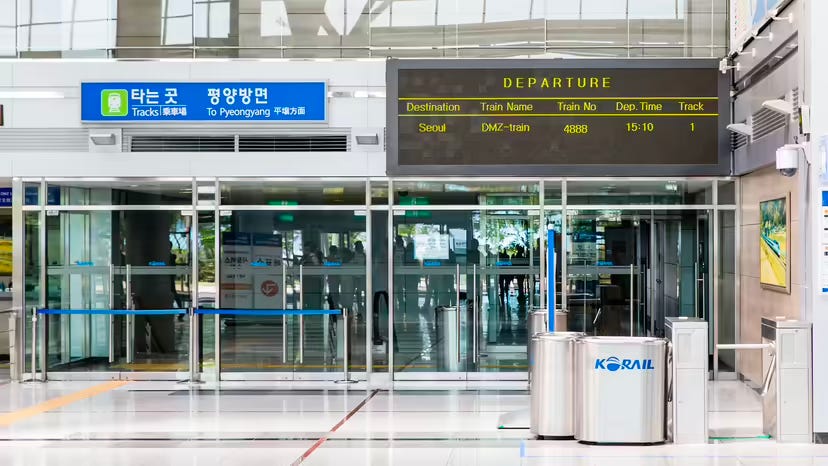
Second Stop: The Bridge of Freedom
Exiting the train station, we walked over to the Bridge of Freedom.
This walkway was used by over 12.000 prisoners of war returning home in 1953. Till this day it stands as a powerful symbol for unity and connection between North and South Korea. Standing here ourselves, we could feel a sense of shared hope.
A silent wish for more people to experience the opportunity to cross and contribute to bridging the divide that has persisted for decades.
Third Stop: The Third Tunnel of Aggression
Out of an estimated 24 tunnels dug by North Korea for a surprise attack on Seoul, only four have been discovered.
The Third Tunnel of Aggression is South Korea’s response to intercept one of them and they’ve opened it to the public (no phones allowed). As we descended into the tunnel, we could feel it getting colder while our steps echoed from the walls. When we reached the bottom, we were met by three concrete fortifications, which were built to keep anyone from passing through the tunnels.
We walked up to the first wall and saw the second wall through a small window. At this very moment, only three walls stood between us and North Korean territory. It was a creepy & daunting feeling to be so close to North Korea while not knowing who or what was on the other side.
Fourth Stop: The Dora Observatory
Even though we couldn’t see into North Korea in the Third Tunnel of Aggression, things changed at the Dora Observatory.
With the provided binoculars, we could see the North Korean propaganda village, Kijong-dong. However, you can’t see windows or interior rooms, since nobody lives there. The village was built entirely for show.
It’s surreal to look into a country that purposefully closed itself off from the rest of world. It feels fascinating, haunting, and illegal all at once. Luckily we remained on the South Korean side through it all.
Looking into North Korean territory and learning about the history of the division between the two countries, you can’t help but wonder what life is like on the other side of the border.
💡 If you’re curious as well, we recommend reading ‘In Order to Live’ by Yeomni Park. Here she shares what life in North Korea was like and how she managed to escape.
Next Stop: Entering North Korea
Finally, there is one stop that we haven’t talked about yet.
Visiting the Joint Security Area (JSA) and officially entering North Korean territory.
The JSA is a collection of buildings in the middle of the DMZ where negotiations are held between North and South Korea. When visiting the JSA, you are able to visit one of the conference rooms under heavy supervision. Because the room is located in both territories, you would officially enter North Korean territory and get a passport stamp as proof.
However, this is the one stop that we didn’t cross off during our DMZ trip.
Uhm… why not?!
Well, because of the price tag. A tour including the JSA was 140 euros per person, while our tour, excluding the JSA visit, was only 35 euros. At the time, that jump felt too big for us. When reflecting on this adventure now, we both agree we’d like to make a visit to the JSA the next time we get the chance.
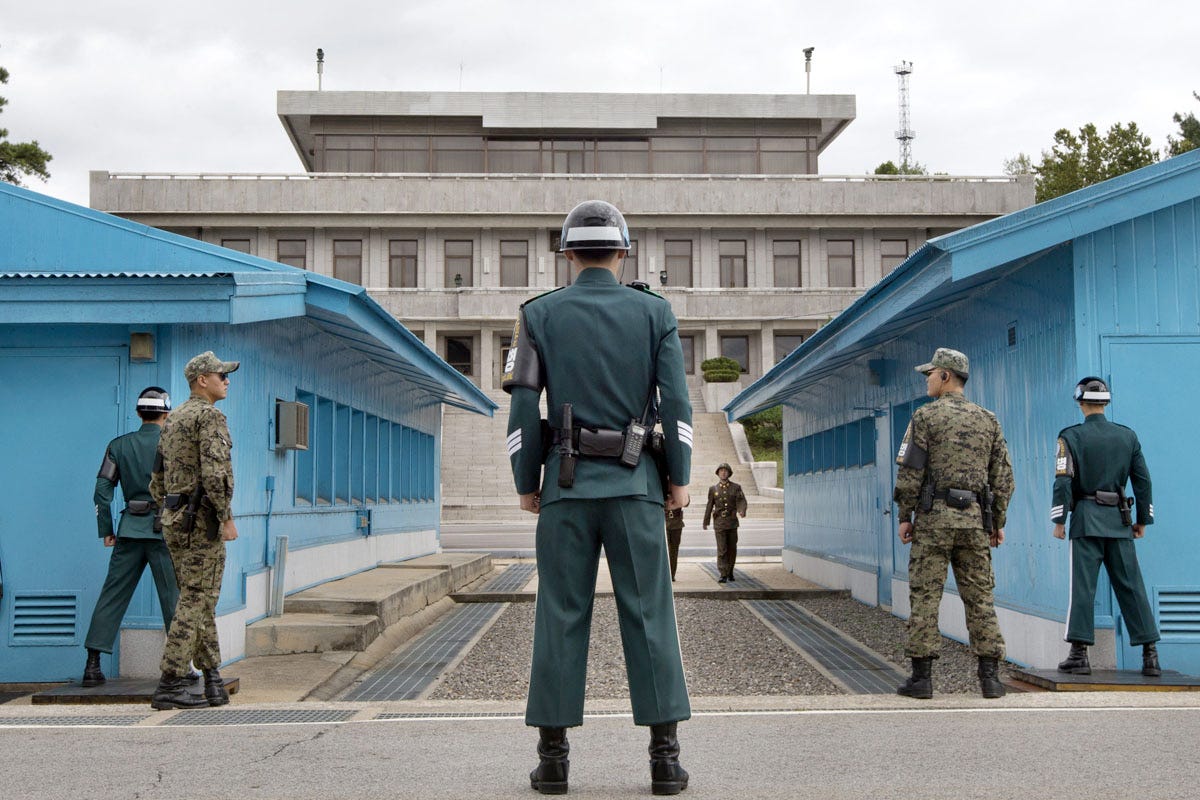
An impressive experience
On the edge of the Bridge of Freedom there is a barbed-wired wall decorated with wish ribbons from South Koreans wishing for peace and unity.
Contrasting images like this made our DMZ visit incredibly impactful. It was more than just a tourist stop. It was a profound reminder of the division of two countries that used to be one, the complex history of their conflict, and a strong desire for reunification.
Needless to say, this was one of the most impressive experiences we encountered while traveling and we highly recommend adding a DMZ-tour to your South Korea itinerary.
💡 Interested in experiencing these fascinating sights yourself when visiting South Korea? Have a look at the DMZ-tour options here!
Eager for more Mapping Memories?
We’ve got you covered 🤝



